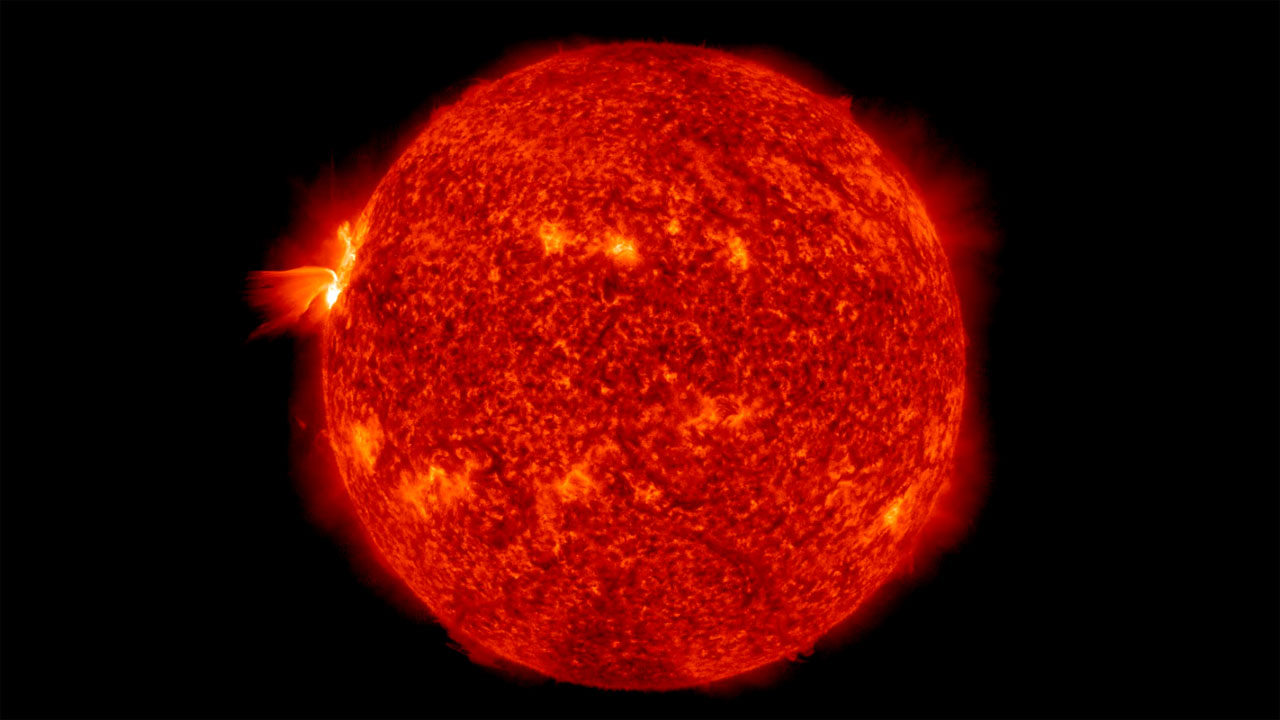This new AI-powered computer model can predict dangerous solar storms
It'll be especially useful as we move toward solar maximum.

When it comes to weather, prediction is the key to preventing disaster — and that's true of space weather, too.
A new AI-powered computer model called DAGGER is specifically trained to predict precisely when and where solar storms will strike Earth, giving us time to prepare infrastructure that could be impacted, such as the power grid.
Every minute of every day, the sun releases energy in the form of the solar wind, a constantly flowing stream of charged particles. Our star also occasionally emits powerful short-term bursts of radiation known as solar flares and blasts out huge clouds of solar plasma in eruptions called coronal mass ejections (CMEs).
Related: Wild solar weather is causing satellites to plummet from orbit. It's only going to get worse.
CMEs that hit Earth interact with our planet's magnetic field, sometimes creating powerful geomagnetic storms. While these storms supercharge our planet's aurora displays, they can have negative impacts as well, potentially causing power outages, satellite failures and communications dropouts.
That's where DAGGER comes in. Developed by the public-private partnership Frontier Development Lab, DAGGER has studied NASA data to find connections between solar activity and damaging geomagnetic activity through a process called deep learning. DAGGER can currently predict a geomagnetic disturbance 30 minutes before the event, its developers say.
"With this AI, it is now possible to make rapid and accurate global predictions and inform decisions in the event of a solar storm, thereby minimizing — or even preventing — devastation to modern society," Vishal Upendran of the Inter-University Center for Astronomy and Astrophysics in India, said in a statement. Upendran is the lead author of a recent paper about the DAGGER model published in the journal Space Weather.
Get the Space.com Newsletter
Breaking space news, the latest updates on rocket launches, skywatching events and more!
While 30 minutes might not seem like much warning, it could be just enough time for infrastructure systems to enact safety protocols to avoid damage. Plus, the DAGGER model has an open-source code, which means that multiple users — say, power companies or satellite operators — can adapt DAGGER to their specific needs.
DAGGER may be coming along at just the right time: The sun is moving toward solar maximum, the peak of its 11-year activity cycle, so advanced solar storm warnings will be particularly useful now and in the near future.
Follow Stefanie Waldek on Twitter @StefanieWaldek. Follow us on Twitter @Spacedotcom and on Facebook.
Join our Space Forums to keep talking space on the latest missions, night sky and more! And if you have a news tip, correction or comment, let us know at: community@space.com.

Space.com contributing writer Stefanie Waldek is a self-taught space nerd and aviation geek who is passionate about all things spaceflight and astronomy. With a background in travel and design journalism, as well as a Bachelor of Arts degree from New York University, she specializes in the budding space tourism industry and Earth-based astrotourism. In her free time, you can find her watching rocket launches or looking up at the stars, wondering what is out there. Learn more about her work at www.stefaniewaldek.com.









